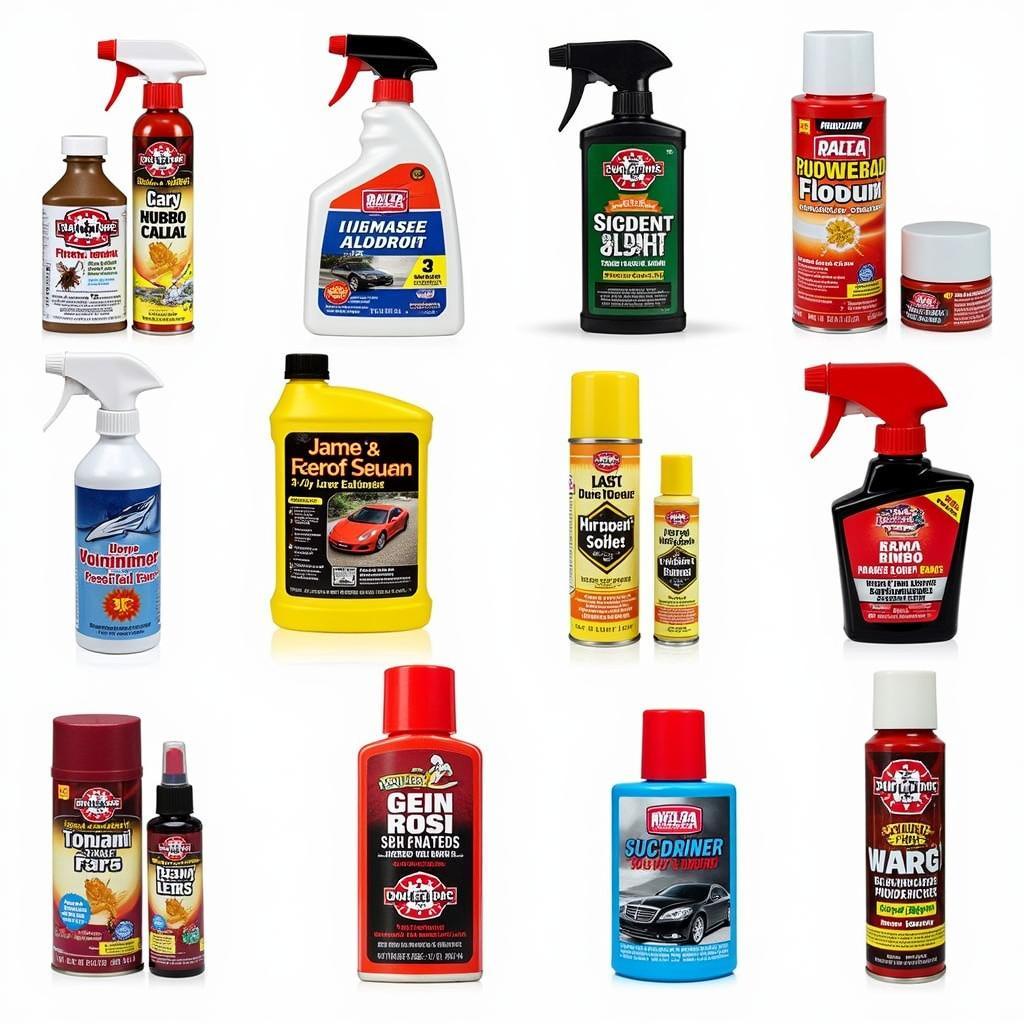Car insect bombs are a popular solution for eliminating pesky insects that have made your vehicle their home. These aerosol foggers promise quick and effective pest control, but are they the right choice for your car? This guide dives deep into the world of car insect bombs, exploring their effectiveness, safety precautions, alternatives, and everything you need to know for a bug-free driving experience.
Understanding Car Insect Bombs
Car insect bombs, also known as foggers, release a pesticide mist that fills the enclosed space of your vehicle, targeting insects like flies, ants, roaches, and spiders. They’re designed to reach every nook and cranny, eliminating hidden pests. While they can be effective, it’s crucial to understand their proper usage and potential risks.
How Car Insect Bombs Work
The active ingredients in car insect bombs vary, but most contain pyrethrins, pyrethroids, or a combination of both. These chemicals attack the nervous system of insects, leading to paralysis and death. The fogger disperses these chemicals in a fine mist, ensuring maximum coverage.
When to Use a Car Insect Bomb
Car insect bombs are most effective when dealing with a significant insect infestation. If you’re constantly swatting flies, noticing ants crawling on your dashboard, or suspecting roaches hiding within your car’s interior, a car insect bomb might be a viable solution. They are especially useful for eliminating hidden infestations where direct sprays might not reach.
After a particularly buggy road trip or if you’ve left food remnants in your car for an extended period, a car insect bomb can help restore a clean and pest-free environment.
Safety Precautions When Using Car Insect Bombs
While effective, car insect bombs contain chemicals that can be harmful to humans and pets if not used correctly. Always follow these safety precautions:
- Ventilation: Ensure proper ventilation before, during, and after using the bomb. Open all windows and doors after the fogging process is complete to allow the fumes to dissipate.
- Protective Gear: Wear gloves, a mask, and eye protection when handling and deploying the bomb.
- Evacuation: Evacuate all people and pets from the vehicle and surrounding area during and after the fogging process. Do not re-enter the vehicle until the fumes have completely dissipated, which usually takes several hours.
- Follow Instructions: Carefully read and follow the manufacturer’s instructions on the label. Different brands may have specific instructions regarding application time, ventilation, and safety precautions.
Potential Risks of Using Car Insect Bombs
Improper use of car insect bombs can lead to health issues such as respiratory irritation, skin allergies, and eye irritation. Overexposure to the chemicals can also cause more severe symptoms. Always prioritize safety and follow the precautions mentioned above.
Alternatives to Car Insect Bombs
If you’re hesitant about using chemical foggers, several alternatives can help control insect infestations in your car:
- Vacuuming: Regularly vacuuming your car’s interior, especially the carpets and upholstery, can remove insects, eggs, and food debris that attract them.
- Steam Cleaning: Steam cleaning can effectively kill insects and their eggs, especially in hard-to-reach areas.
- Insect Traps: Sticky traps can capture crawling insects, helping to monitor and reduce their population.
- Natural Repellents: Certain essential oils, such as peppermint and citronella, can repel insects. Place a few drops on cotton balls and strategically place them inside your car.
who created love bugs that stick to cars
Choosing the Right Car Insect Bomb
Not all car insect bombs are created equal. Consider the following factors when choosing a product:
- Active Ingredients: Look for products containing pyrethrins or pyrethroids, which are effective against a broad range of insects.
- Coverage Area: Choose a bomb that is appropriately sized for your vehicle. Using a bomb that is too small for the space may not be effective.
- Specific Pests: Some bombs are formulated to target specific pests. Choose a product that is designed to eliminate the insects you’re dealing with.
 Various Car Insect Bombs on Display
Various Car Insect Bombs on Display
Conclusion
Car insect bombs can be a powerful tool in the fight against car infestations. When used correctly and with appropriate safety precautions, they can effectively eliminate unwanted pests and restore a clean and comfortable driving environment. However, consider the potential risks and explore alternative methods if you’re concerned about chemical exposure. By understanding the nuances of car insect bombs, you can make an informed decision and choose the best approach for your specific situation.
FAQ
- How long should I leave my car after using an insect bomb? At least several hours, or as directed by the manufacturer. Ensure the fumes have completely dissipated before re-entering.
- Are car insect bombs safe for leather seats? While most bombs are safe for car interiors, it’s always best to test a small, inconspicuous area first.
- Can I use a regular household insect bomb in my car? No, use only bombs specifically designed for vehicles.
- What if the infestation persists after using a bomb? You may need to repeat the process or consider professional pest control.
- How can I prevent future infestations? Regular cleaning, vacuuming, and avoiding leaving food in your car can help prevent future insect problems.
- Are there any natural alternatives to insect bombs? Yes, options like steam cleaning, natural repellents, and traps can be effective.
- Where can I purchase car insect bombs? Auto parts stores, hardware stores, and online retailers typically carry car insect bombs.
Need help with car diagnostics? Contact us via WhatsApp: +1(641)206-8880, Email: [email protected], or visit us at 276 Reock St, City of Orange, NJ 07050, United States. Our customer service team is available 24/7.


